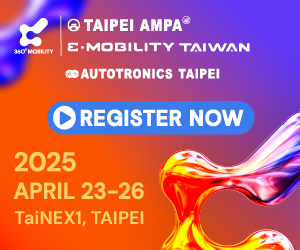Coming off the back of a turbulent 2024 – a year marred by factory closures and shrinking automotive production, the sector has become much more complex. Characterized by the green transition and propelled by increased competition from new (and faster-to-market) manufacturers, we’re in for a thrilling ride as we brace for 2025.
There are a few trends that we believe will define the automotive sector this year. On the regulatory front, new policies will see an accelerated shift towards hybrid vehicles. As the industry navigates these sweeping changes, partnerships, innovation, and adaptability will be paramount in driving success and sustainability. On the innovation front, we can expect to see greater action on the F1 track as teams gear up for the final stretch leading to 2026, the first year of new FIA regulations.
So, let’s jump into the trends.
A clearer road towards energy transition
The last two years have ushered in huge changes as the European automotive sector has rapidly adjusted to the requirements of the green transition. With OEMs closing factories at speed and others producing fewer cars than they did during the pandemic, change has been our only constant.
This has put pressure on Internal Combustion Engine (ICE) and car manufacturers (OEMs). Uncertainty has bred confusion about what the future of the sector might look like. Up until 2023, the focus was on the transition towards electric vehicles (EVs) to phase out ICE powered vehicles post 2030.
However, EV pricing, legislation, infrastructure challenges and dominant Chinese competition have forced the European automotive industry to rethink its strategy (and timeline) – fast.
So, as we look ahead, in 2025 – our belief is that change will be marked by increased clarity. A new political order in the US will surely shape new policies. Concurrently, we know that the new European Commission is working on legislation that will (in the short term) create more space for European manufacturers.
The hope is that this will provide a clearer framework regarding the continent’s energy transition strategy. And where there is clarity, there is greater confidence. Our view is that this will likely include a ‘scaling back’ of the narrow focus on EVs, in favor of greater acceptance of hybrid solutions overall.
The drive towards differentiation
2025 will also be the year that we will finally see greater diversification of cars on our roads.
While many drivers still feel more comfortable with ICE powered vehicles, momentum towards hybrid alternatives will continue to gather pace this year. In the lubricant sector, our view is that this innovation will separate the ‘cautious’ from the ‘changemakers’ in 2025.
Hybrid vehicles haven’t always been accepted as viable mobility solutions. Some have looked at them as being an ‘unnecessary step’ in the green transition. But we’ve come to know better. And the technology is finally catching up.
Why? Because hybrids require a sophisticated, synthetic lubricant and not many players have the innovative backbone to produce these technologically advanced lubricants. PETRONAS Lubricants International (PLI) has continued to invest in hybrid innovation, with lubricants developed specifically for the requirements of hybrid vehicles. By providing expert advice to automotive professionals in this field, we see ourselves as catalysts for change.
Innovation bravery and adapting to new consumer trends from the use of EVs to hybrids will therefore be a must into 2025 and beyond, to cater to the needs of the mass market in the automotive sector.
Powered by partnerships – the year you cannot ‘go it alone’
Change isn’t always easy to accomplish alone.
The diversification of powertrains presents huge opportunities to build favor towards hybrid vehicles. This not only offers massive opportunities for automotive workshops – powering the independent aftermarket to play a more significant role. It also helps blend ICE knowledge with newly acquired EV expertise. Ordinarily, EVs are very dependent on OEMs because of the ‘parts for life’ in vehicles.
This approach changes the game, and it also demands investment. It requires meaningful partnerships with industry experts who can provide this know-how seamlessly. 2025 will therefore be the year where we see workshops increasingly merge or partner with brands like PETRONAS which has one of the largest workshop networks in Europe. By having access to the tools and expertise to manage the maintenance of hybrids, in addition to ICE and EV powered vehicles, 2025 won’t be the year when those in the European automotive sector can ‘go it alone’.
With the full transition to EVs being delayed, 2025 has the potential to drive impactful change. Change that will provide a clearer view of the future of the automotive and lubricant industry. This will include more strategic and stronger partnerships with OEMs to build an improved and robust circular economy, as evidenced by the partnership between PLI and Stellantis.
One of the key achievements of this partnership is the co-branded Selenia SUSTAINera engine oils sourced from 30% recycled materials base oils in the formulation, and providing protection comparable to virgin base oil formulations. Moreover, Selenia SUSTAINera comes in packaging that is 50% from recycled plastics.
So, what partnerships will be the drivers of progress in 2025?
From the road to research
To make sense of the year ahead, we must accept that the automotive industry is driving around a sharp bend.
It’s not always easy to see what’s around the corner, but a steadfast approach to customer intimacy will help the sector emerge on the right side of the road. That’s why we believe 2025 will be the year when customer centricity will become business critical.
From diversifying away from standard combustion to a higher degree of hybridization, we’re ushering in an era of new fuel options (e.g. hydrogen, ethanol, bio based); all of which require OEMs to make tougher choices, as well as accommodate new requirements for lubricants.
We know that new opportunities are born on the back of new consumer behaviors – or challenges beyond simply driving away from ICE vehicles. CO2 reduction is on everyone’s mind – it’s very much in the public psyche. And the good news is, there are lots of ways to approach this.
In 2025, we’ll need to innovate faster to meet customer demands for CO2 reduction efforts. Using more raw materials from plants or biogenic sources which are proven to have reduced carbon footprint. This is in addition to re-refined base oils which have already seen a full life, to give us materials that are as good (if not better) than virgin base oils.
We will also need to broaden our efforts to tackle sustainability at different levels, not only for products. For example, at PLI’s Global R&T center, internal testing facilities have engines on the test stand utilize fuels, like a normal engine in a car. That generated energy is then converted into electricity through a dynamo, electricity that is then fed back into the grid on site.
From defining the focus of R&T priorities to helping customers navigate the diversification of technology with new applications – 2025 is the year we need to make sure we’re hard-wiring necessary change.
Finding the biting point for the transition phase
2025 will be a year in which we need to strike a better balance between old and new. Why? Because we still have a broad mix of vehicles on our road.
We call this period the ‘green transition’ intentionally because it is exactly that, a transitionary moment. Accommodating future requirements is not a turnkey situation in our industry. And whilst we will see huge strides in the innovation of new materials for new vehicles. We cannot forget about the older vehicles which we will still have on the road.
It’s a challenge to get the right balance – protecting older hardware and catering for the new. However, we need products which support both ends of the market, and everything in between.
An example of this is PETRONAS Syntium X, a range of engine oils designed to meet the evolving needs of today’s vehicles. Offering unparalleled protection, extended drain intervals, durability, and enhanced fuel economy, we can ensure drivers make smart choices for their cars without compromising on quality.
This is why we’re continuously exploring design optimization, sustainable formats for our packaging, and improved circularity cycle. For example, the design of PLI bottles and caps reduces materials usage to 15% less plastic compared to traditional bottles.
Businesses are calling for more flexibility to achieve simplicity. Looking ahead, we should be excited about finding solutions and tackling new challenges to make a tangible difference to the environment and our customers.
Our industry is often seen as the cause of many of these problems, but we can increasingly provide the solution, especially when it comes to CO2 reduction. We can achieve unbelievable things with new technologies that simply work smarter and last longer.
Shifting gears on the F1 track
The ultimate test of fluids has and always will be, on the track. 2025 will be no exception.
With changes to engine oils and fuels frozen this year, teams will be gearing up for the regulatory change set by the FIA in 2026. Innovation is always happening in our sector, and this year will be incredibly busy for researchers. With all eyes on the FIA’s ambition to have 100% sustainable fuel by 2026, 2025 will be a year or reckoning for vehicles hitting the F1 track.
The new regulation represents a dramatic change, especially for current F1 power units which deploy around 1000 horsepower – 700 from the internal combustion engine (ICE) and 300 horsepower from electric engines, with fuel as the primary source of energy.
By 2026, however, the ratio will shift to 50/50. A further big contribution to optimizing the energy efficiency of the engine comes from PETRONAS Syntium, the engine oil that has fueled 8 Formula 1 victories with tailor-made solutions for the technical challenges of F1, which have delivered clear advantages on the track. The new lubricant will be serving a completely new ICE configuration and will need to be cross-compatible with the new sustainable fuel molecules in order to avoid negative cross-interactions that could eventually dent performance and/or durability.
While greener technologies are important, the focus in 2026 will remain on advanced sustainable fuel and sustainable fuel regulations. Fluids which require biomolecules from waste (not food-derived) or synthetic molecules from green energy.
Fluids are always paramount, so there is excitement in the garage to structure and make sure performances are durable and reliable. There is no point in being the fastest if you have two or three laps before race completion and you break down; teams always need to make sure that nothing is compromised. For example, using three engines per season that can adapt to harsher grid penalties.
2025 is therefore going to be an incredibly exciting year on the track. While teams will be racing with the same lubricant, the learnings that will be generated during the competitions will fast track their way to research and production teams. Doing more with less will be important in 2025, looking ahead to the real game-changer season that every technical geek is waiting for: 2026!






















